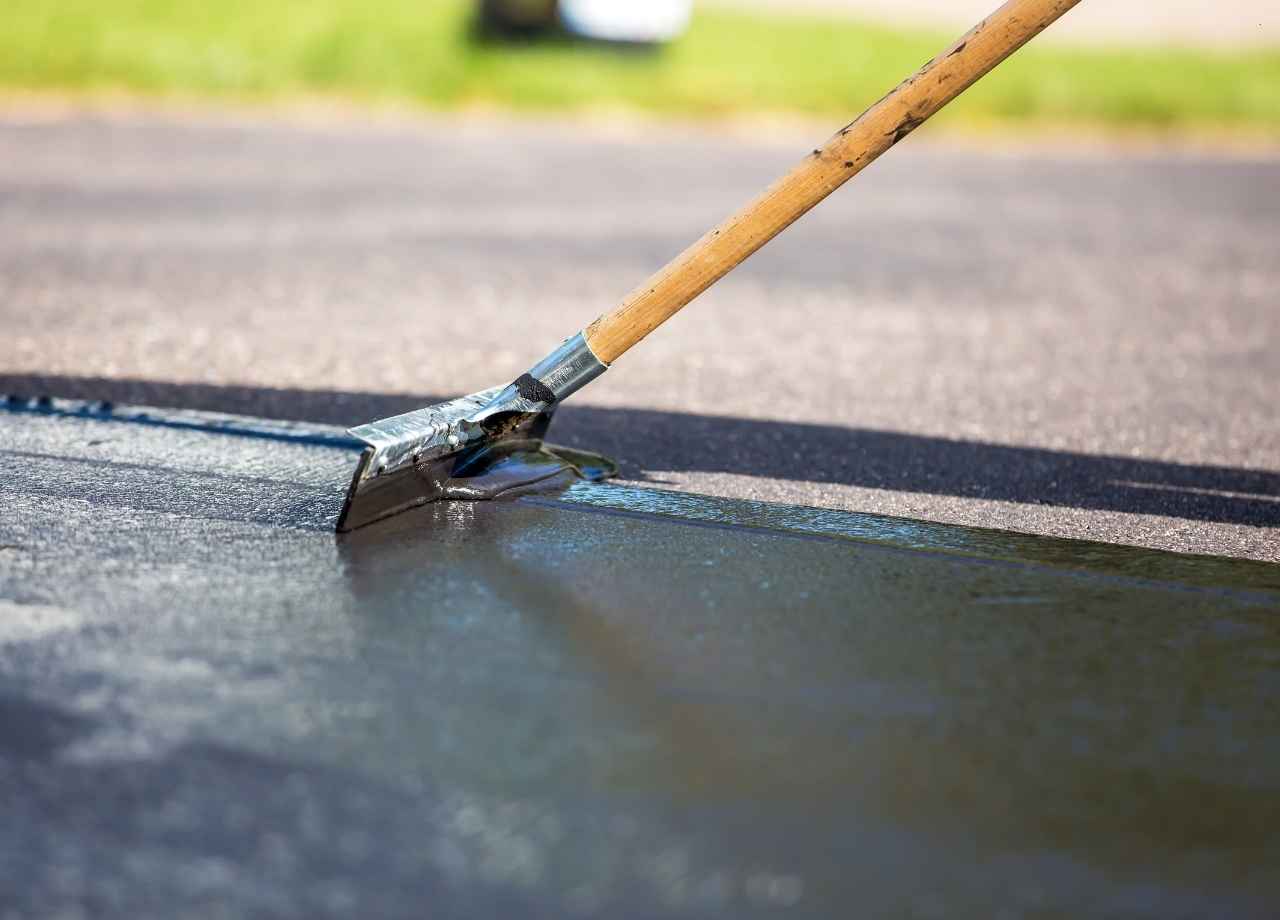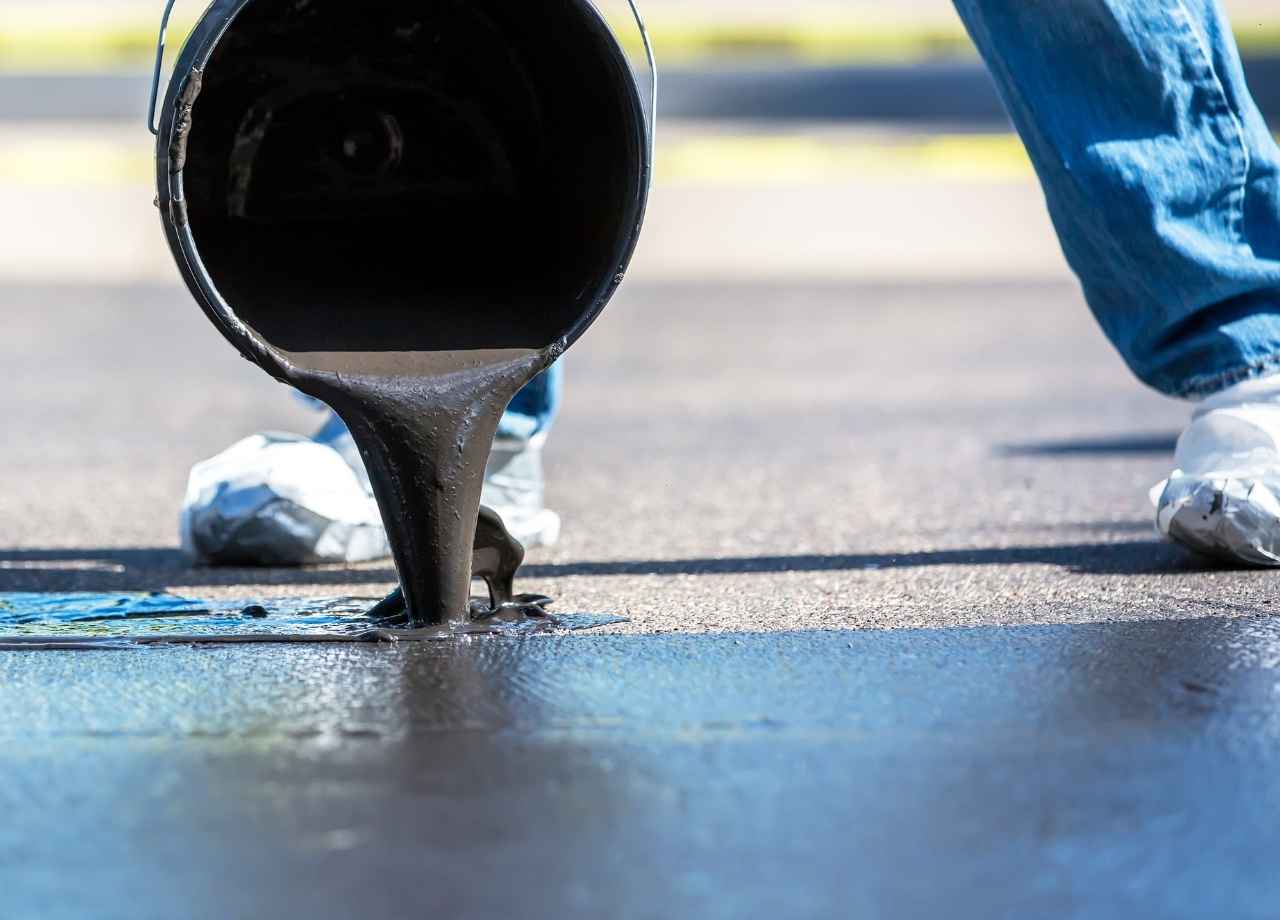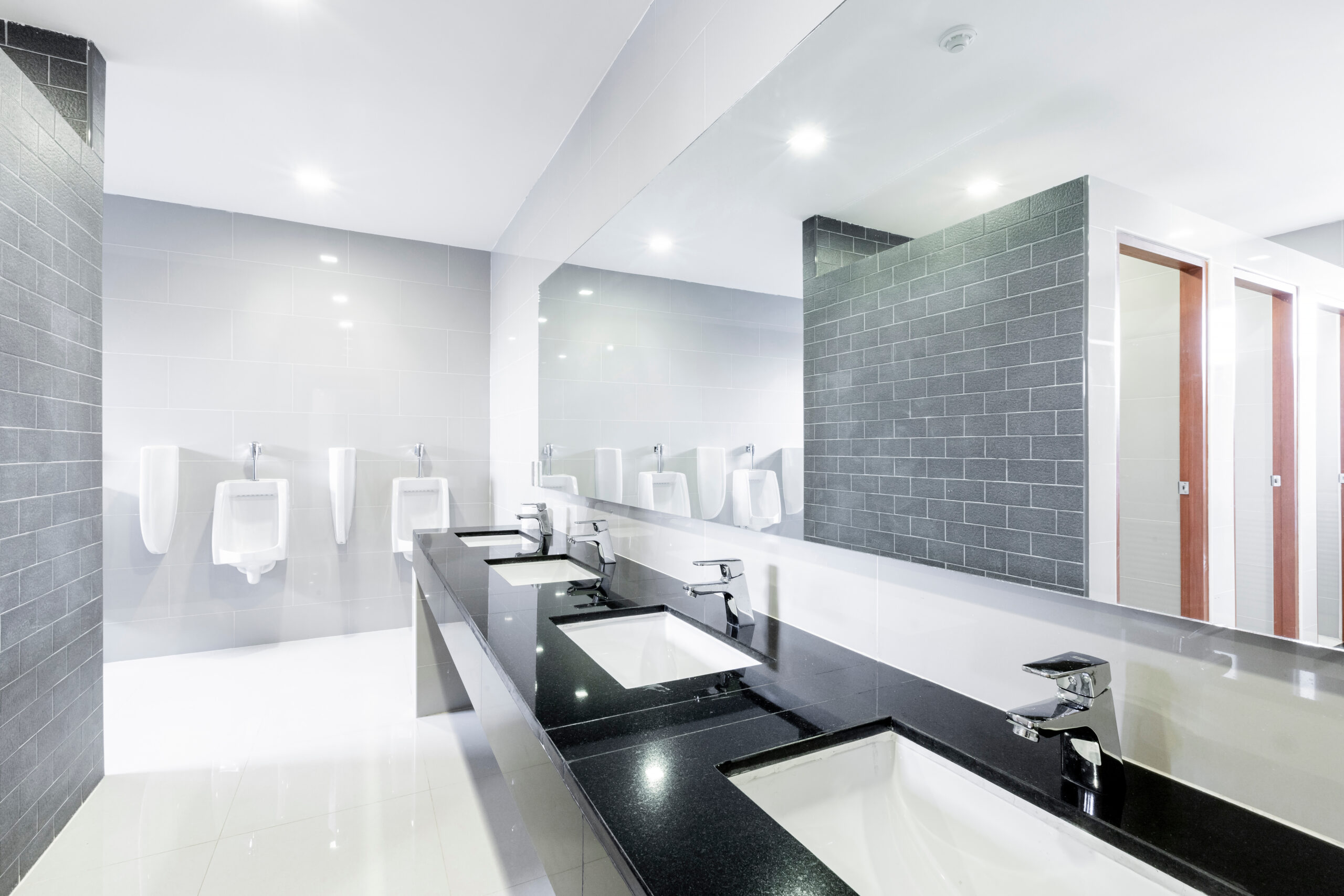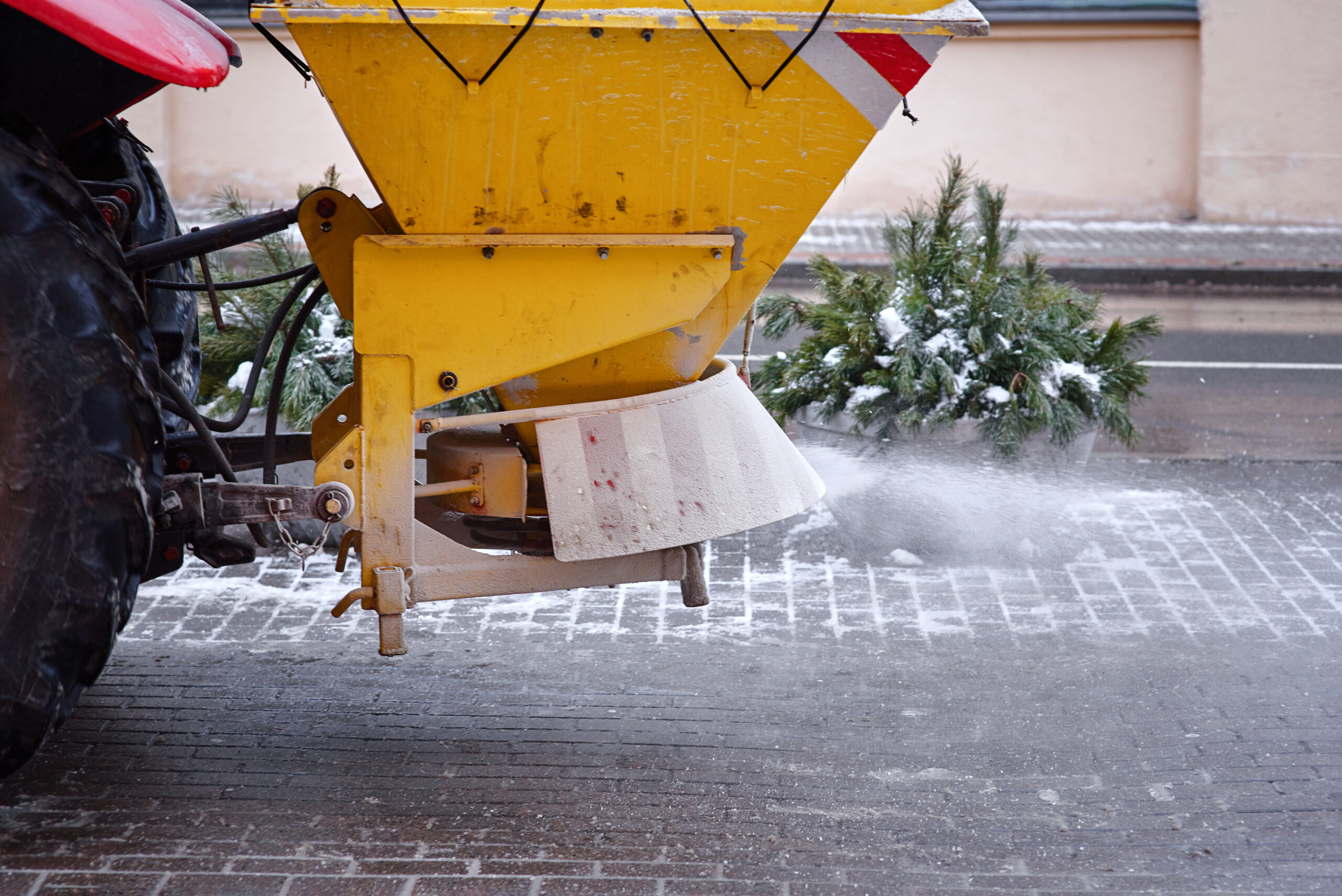Is Commercial Asphalt Seal Coating Necessary?
Fresh pavement always gives off a strong impression—sharp lines, smooth texture, deep black color. Months later, wear starts to show: gray discoloration, tiny cracks, loose gravel, faded striping. Most property managers chalk this up to time, but deterioration doesn’t just happen. It accelerates when protection is missing.
Running a commercial property brings enough variables to manage—budgets, leases, tenant turnover, utility repairs. Pavement tends to fall low on the list until a problem escalates. The cost of repaving a commercial lot often exceeds five figures, depending on size and regional labor rates. That kind of hit can come out of nowhere unless the lot is maintained properly, and seal coating plays a major part in that.
Asphalt Is Porous by Nature
Asphalt might look like a solid surface, but it’s not completely sealed off from the elements. It’s made from a mixture of aggregate and bitumen, and that binder, bitumen, degrades over time under sun, oxygen, and moisture. UV rays cause oxidation, making the surface brittle. Water seeps into those tiny spaces, then expands when it freezes, widening cracks from the inside out.
Vehicles don’t help either. Oil and gas leaks soften the surface. Frequent braking and turning, especially in lots used by delivery trucks, chew away at high-traffic zones. Once the top layer breaks down, damage spreads quicker with every season.
Seal Coating Slows That Process
Think of seal coating like weatherproofing. It forms a protective barrier over the asphalt. This layer reduces UV exposure, fills small surface voids, and shields the surface from chemicals and moisture. It doesn’t stop wear entirely, but it changes the rate. A regularly maintained lot with seal coating can last double the years of one left untreated.
That matters when considering long-term costs. Applying sealant every few years adds up, but not nearly as much as full resurfacing. And since seal coat jobs take far less time and labor than repaving, scheduling is easier. A weekend or overnight seal job won’t disrupt tenants or customers the way full-scale resurfacing does.
Timing and Frequency Depend on Traffic
There’s no one-size-fits-all recommendation. Some facilities—like fast food chains or shopping centers—experience near-constant traffic. Tire wear, oil drips, and heavy loads wear seal coating faster. In those cases, application every 18 to 24 months makes sense.
In low-traffic lots—say, professional offices or churches that close outside business hours—recoating every three years might be sufficient. It’s not just about volume, though. Snowplows, de-icing salts, and even landscaping crews scraping the edges can tear at the surface.
Monitoring the pavement’s appearance is usually a good gauge. When the rich black color fades and the texture becomes patchy, that’s a sign the protective layer is wearing thin.
Skipping Maintenance Leads to Layered Costs
Postponing seal coating for a year or two might not seem like a big deal. The lot still functions, after all. But problems stack up faster than expected. Cracks start to form, and if left untreated, they widen. Potholes follow, then water gets into the base layers. At that point, patching becomes a temporary fix.
Catch basins can sink, curbing may crack, and soon the entire lot starts looking worn and neglected. Tenants might not say anything directly, but a rundown lot creates a visual signal—low upkeep elsewhere could be assumed.
Budget-wise, deferred maintenance rarely saves money. It shifts cost forward and usually multiplies it. A $2,000 seal coat job skipped today can lead to a $25,000 reconstruction within five years.
Seal Coating Isn’t Cosmetic—But It Does Add Curb Appeal
Some property owners write off seal coating as aesthetic, assuming it’s only applied to improve the lot’s appearance. The look certainly improves, but the benefits extend beyond that.

A fresh seal coat darkens the surface, helping pavement markings pop. That matters more than some might think. Faded lines cause confusion and poor parking alignment. In retail settings, it leads to inefficient use of space. In multi-tenant industrial facilities, it can become a liability concern.
A well-striped lot sends a message: this property is maintained, organized, and safe. Those are quiet signals, but they influence how visitors, tenants, and inspectors view the business behind the curb.
Seal Coat Application Isn’t One-and-Done
Some property managers apply seal coating once and assume the job’s handled. That approach misses the point. Regular maintenance is what keeps the surface healthy. That includes crack filling and occasional patching. Seal coating is part of a broader upkeep schedule.
Weather matters, too. Coating needs dry, warm conditions to cure properly. That usually narrows application windows to late spring through early fall, depending on the region. Trying to rush the process outside of that range leads to poor bonding and reduced effectiveness.
Having a set schedule helps. Partnering with a facility maintenance contractor who tracks previous jobs and suggests the right timing makes the task easier to manage. They’ll also be more familiar with specific wear patterns on your property and can plan around seasonal business peaks.
Cutting Corners Shows Fast
There’s a noticeable difference between professional seal coating and quick, budget jobs. A proper application includes surface cleaning, minor crack repairs, and even coating. Some fly-by-night operators dilute material, skip prep, or apply too thin a layer.
The result: the coat flakes, wears off quickly, or doesn’t protect the surface underneath. That cheap job ends up being a waste of time and money. Investing in the right contractor—one who knows how commercial properties work and has the equipment for larger lots—prevents those issues.
Every Property Has a Breaking Point
Even with perfect maintenance, asphalt has a finite lifespan. But seal coating stretches that lifespan significantly. It can buy years of functional use, keep appearance sharp, and prevent avoidable repairs.
Facilities managers who budget for seal coating as part of routine operations avoid nasty surprises. They also avoid calls from tenants complaining about potholes or accessibility issues. Regular coating, combined with inspections and minor repairs, can keep a lot looking and functioning at its best far beyond its expected service years.
Commercial Properties Can’t Afford to Ignore Pavement Health
Nobody walks into a commercial building thinking about the parking lot. But they notice when it’s broken. That silent reaction matters. It affects perceptions, safety, and eventually leasing decisions.
This is why property teams partner with National Facility Contractors to implement proactive seal coating programs tailored to lot usage, seasonal wear, and long-term budget goals—ensuring pavement protection doesn’t become an afterthought.
Seal coating won’t stop time, but it stretches your budget further than letting wear run its course. And when it’s done right, it’s one of the most cost-effective ways to keep a property functional and attractive without major capital investment.






